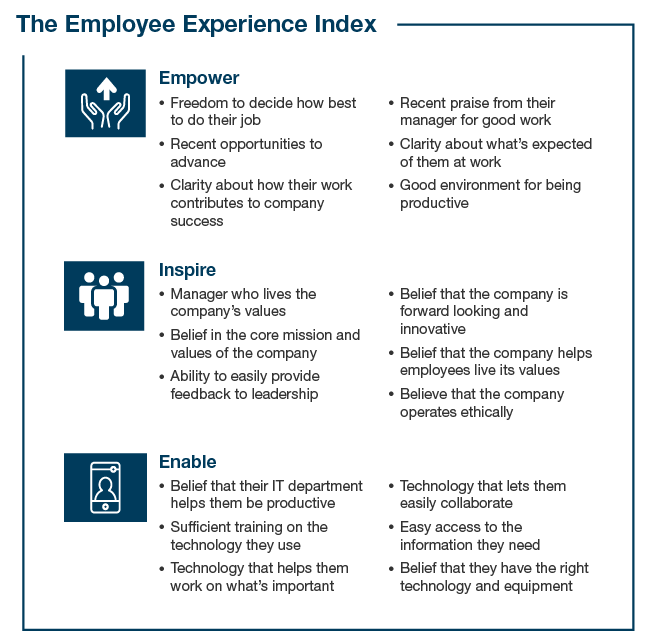The Employee Experience Index
Six years ago, I noticed a pattern in the inquiry calls I was fielding from clients. At the time, many of them centered around things like BYOD, whether to take away local admin rights from PCs, and other decisions driven by escalating fears of security or compliance risks. If I was able to answer their questions in less than 30 minutes, it gave me an opportunity to ask a question or two of my own: “So you have responsibility for the productivity of 10,000 people, yes?” Their answer was usually some variation of “I guess you could say that.” To which I would then ask: “OK, tell me what you know about how your decisions will impact their motivation or willingness to engage.” After a few moments of uncomfortable silence, their answer was often “I don’t know.” An opportunity was born.
Fast-forward to today, and I’m proud to be sharing with you the results of six years’ worth of research to better understand what really drives employee experience (EX). Spoiler alert: It’s not what you think it is. Ask any group of managers to rank in order of importance the factors they think are most likely to create a positive employee experience. They will say things like recognition, pay-for-performance, important work, great colleagues, or flexibility. Of course these things are important, but they’re not the most important. Psychological research shows that the most important factor for employee experience is being able to make progress every day toward the work that they believe is most important. But when presented with this option, managers will consistently rank it dead last. Clearly, we have a gap.
We surveyed 14,000 information workers globally, across all industries, with a special eye toward factors that impact their ability to make daily progress. This gives us a much more detailed window into the factors that drive employee experience than typical employee engagement surveys can resolve, such as how technology policies and strategy impact engagement. Our findings confirm that most of what makes up employee experience is what they experience every day and that having the resources they need to succeed in the work their organizations expect of them is paramount.

Our findings have significant (and counterintuitive) implications for where organizations should invest their limited resources. For example, it’s likely that an investment in making it easier for employees to find task-critical information will have a greater positive effect on EX than a performance management system.
You can use our EX methodology to find out how your organization stacks up with the index and pinpoint gaps in clear detail.
